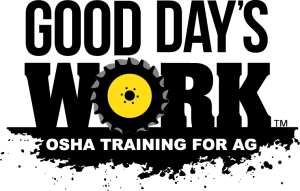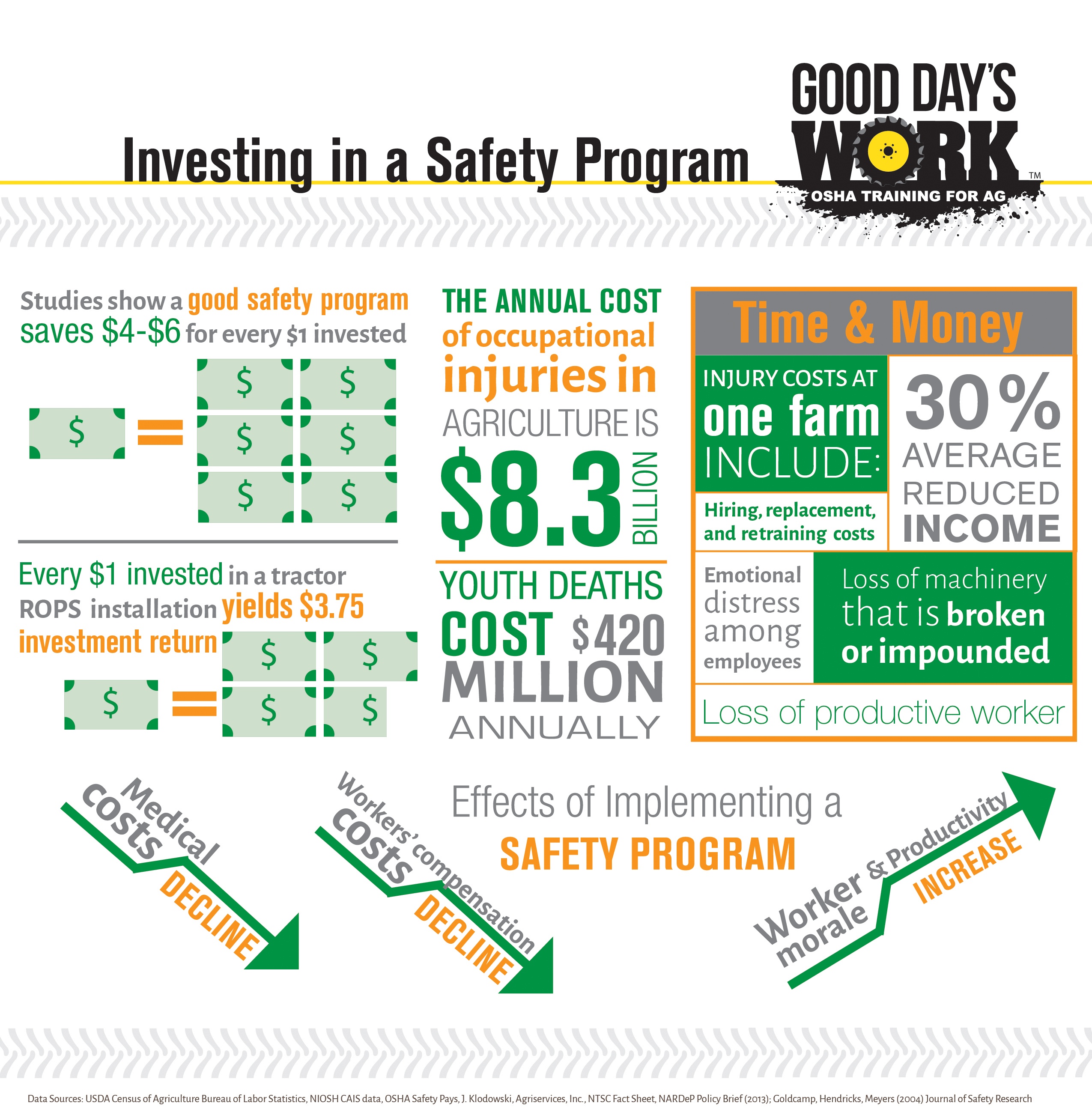Investing in proper safety training is an important component of your operation’s preparations for a new year. As you can see below, just the financial costs of injuries – and deaths – from ag-related activities can cost your business thousands of dollars a year. And this is even before OSHA gets involved!
As an ag operation owner, you no doubt have an insurance plan in place in case something goes wrong. It's part of the price of doing business in the event of an accident or disaster. Sometimes, that insurance plan can mean the difference between staying afloat after a particularly difficult year and going under completely.
Topics: safety training program
How to Run a Farm Safety Program: Prepping for the New Year 2017
For many ag operations, winter is the “off-season,” making it an excellent time to ensure your employees have completed their annual safety training. It’s also a good time to conduct a hazard assessment of your operation. Here are four things you can do now to help ensure that your next year is as safe as possible.
Topics: safety training program, hazard communication, hazard analysis
Whether you have a robust Safety Training program in place, or realize that you must get one started very soon, it can be helpful to establish your core objectives at the beginning of each year. Here are some considerations:
Topics: safety training program, insurance/ risk management, productivity / goals / motivation
If you have a dairy operation in Wisconsin or upstate New York, or a pork production facility in Minnesota, or a feedlot in the plains states, you know that OSHA has been looking at you with greater intensity. Sources close to the agency tell us that OSHA has focused on the chemical industry, manufacturing and construction over the last 30 years and feel that they now have those industries well-established with clear protocols and robust monitoring. With Agriculture being the last high-risk industry that they haven’t targeted for significant improvements, it’s only logical that they would go here next.
‘Tis the season for family, fun, and festivities. You’ve worked hard all year, and now it’s time to slow down and enjoy a little well-earned celebration. You’ve earned it. Just remember, for the sake of both you and your loved ones, to practice a little personal safety this holiday season.
Topics: seasonal
‘Tis the season for family, fun, and festivities. You’ve worked hard all year, and now it’s time to slow down and enjoy a little well-earned celebration. You’ve earned it. Just remember, for the sake of both you and your loved ones, to practice a little personal safety this holiday season.
Topics: seasonal
The holidays are a time for loved ones to gather and celebrate the season. But let’s not forget to practice personal safety – for both you and your family – during this festive time.
Topics: seasonal
“Nobody likes getting older, but it’s better than the alternative…” is a phrase that we hear often in regards to aging. When it comes to safety on the farm, we need to respect the fact that as we age we don’t have the same reflexes, strength, flexibility or agility that we had in years past. This progresses faster in some people, and slower in others. We must learn to gauge our own abilities and be realistic in the activities we choose to do—and how we choose to do them.
Topics: farm
Many things can happen in an ag business to make it a really bad day, and one of the worst might be a day that OSHA decided to stop by for an unannounced audit. For some businesses that have regular inspections it may not be a major event, but for most operations it could be an expensive review.
Topics: OSHA law & compliance, OSHA inspections & violations











